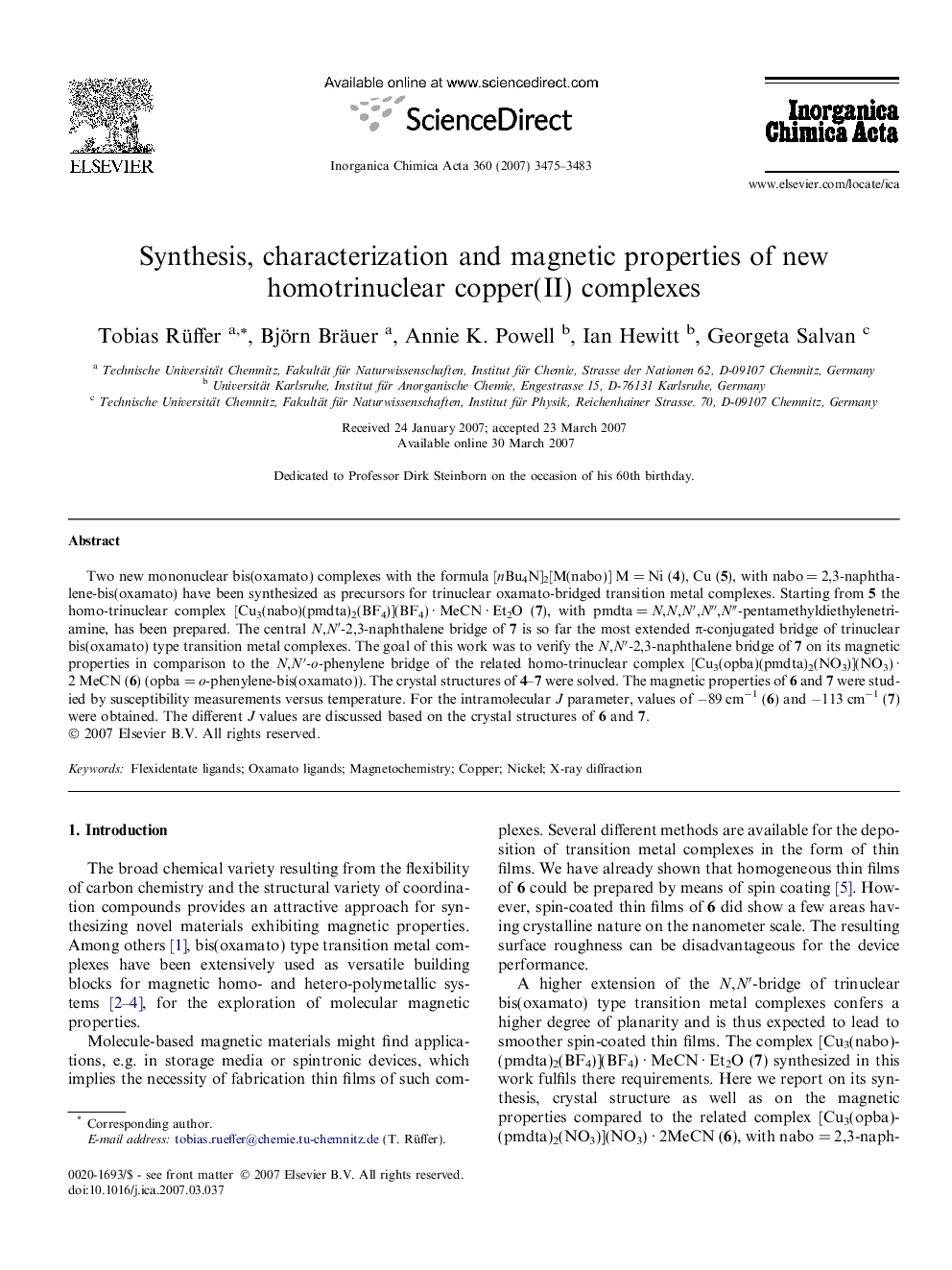| Article ID | Journal | Published Year | Pages | File Type |
|---|---|---|---|---|
| 1309510 | Inorganica Chimica Acta | 2007 | 9 Pages |
Two new mononuclear bis(oxamato) complexes with the formula [nBu4N]2[M(nabo)] M = Ni (4), Cu (5), with nabo = 2,3-naphthalene-bis(oxamato) have been synthesized as precursors for trinuclear oxamato-bridged transition metal complexes. Starting from 5 the homo-trinuclear complex [Cu3(nabo)(pmdta)2(BF4)](BF4) · MeCN · Et2O (7), with pmdta = N,N,N′,N″,N″-pentamethyldiethylenetriamine, has been prepared. The central N,N′-2,3-naphthalene bridge of 7 is so far the most extended π-conjugated bridge of trinuclear bis(oxamato) type transition metal complexes. The goal of this work was to verify the N,N′-2,3-naphthalene bridge of 7 on its magnetic properties in comparison to the N,N′-o-phenylene bridge of the related homo-trinuclear complex [Cu3(opba)(pmdta)2(NO3)](NO3) · 2MeCN (6) (opba = o-phenylene-bis(oxamato)). The crystal structures of 4–7 were solved. The magnetic properties of 6 and 7 were studied by susceptibility measurements versus temperature. For the intramolecular J parameter, values of −89 cm−1 (6) and −113 cm−1 (7) were obtained. The different J values are discussed based on the crystal structures of 6 and 7.
Graphical abstractThe homo-trinuclear complex [Cu3(nabo)(pmdta)2(BF4)](BF4) · MeCN · Et2O 7 (nabo = 2,3-naphthalene-bis(oxamato), pmdta = N,N,N′,N″,N″-pentamethyldiethylenetriamine) with the so far most extended π-conjugated N,N′-bridge of trinuclear bis(oxamato) type transition metal complexes has been synthesized. Its magnetic properties are discussed in relation to the analogous complex [Cu3(opba)(pmdta)2(NO3)](NO3) · 2 MeCN (6) (opba = o-phenylene-bis(oxamato)), based on the molecular and crystal structures of both complexes.Figure optionsDownload full-size imageDownload as PowerPoint slide
